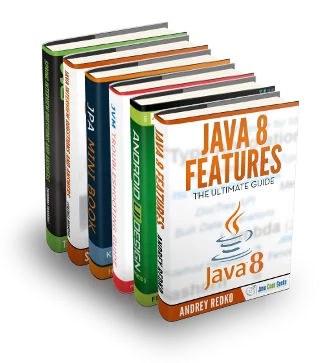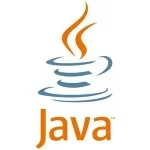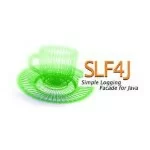Tutorial: Writing your own CDI extension
Today I will show you how to write a CDI extension.
CDI provides a easy way for extending the functionality, like
- adding own scopes,
- enabling java core classes for extension,
- using the annotation meta data for augmentation or modification,
- and much more.
In this tutorial we will implement an extension that will inject properties from a property file, as usual I will provide the sources at github [Update: sources @ github].
The goal
Providing an extension that allows us to do the following
1 2 3 4 5 6 7 8 | @PropertyFile("myProps.txt")public class MyProperties { @Property("version") Integer version; @Property("appname") String appname;} |
where version and appname are defined in the file myProps.txt.
Preparation
At first we need the dependency of the CDI api
1 | dependencies.compile "javax.enterprise:cdi-api:1.1-20130918" |
Now we can start. So let’s
Getting wet
The basics
The entry point for every CDI extension is a class that implements javax.enterprise.inject.spi.Extension
1 2 3 4 5 6 | package com.coderskitchen.propertyloader; import javax.enterprise.inject.spi.Extension;public class PropertyLoaderExtension implements Extension {// More code later} |
Additionally we must add the full qualified name of this class to a file named javax.enterprise.inject.spi.Extension in META-INF/services directory.
javax.enterprise.inject.spi.Extension
1 2 | com.coderskitchen.propertyloader.PropertyLoaderExtension |
These are the basic steps for writing a CDI extension.
Background information
CDI uses Java SE’s service provider architecture, that’s why we need to implement the marker interface and adding the file with the FQN of the implementing class.
Diving deeper
Now we must choose the right event to listen for.
Background information
The CDI specs defines several events which are fired by the container during the initialization of the application.
For example the BeforeBeanDiscovery is fired before the container starts with the bean discovery.
For this tutorial we need to listen for the ProcessInjectionTarget event. This event is fired for every single java class, interface or enum that is discovered and that is possibly instantiated by the container during runtime.
So let’s add the observer for this event:
1 2 | public <T> void initializePropertyLoading(final @Observes ProcessInjectionTarget<T> pit) {} |
The ProcessInjectionTarget grants access to the underlying class via the method getAnnotatedType and the instance in creation via getInjectionTarget. We use the annotatedType for getting the annotations on the class to check if @PropertyFile is available. If not, we will return directly as a short circuit.
The InjectionTarget is later used for overwriting the current behavior and setting the values from the properties file.
1 2 3 4 5 6 | public <T> void initializePropertyLoading(final @Observes ProcessInjectionTarget<T> pit) { AnnotatedType<T> at = pit.getAnnotatedType(); if(!at.isAnnotationPresent(PropertyFile.class)) { return; } } |
For the sake of this tutorial we assume that the properties file is located directly in the root of the classpath. With this assumption we can add the following code to load the properties from the file
01 02 03 04 05 06 07 08 09 10 | PropertyFile propertyFile = at.getAnnotation(PropertyFile.class);String filename = propertyFile.value();InputStream propertiesStream = getClass().getResourceAsStream("/" + filename);Properties properties = new Properties();try { properties.load(propertiesStream); assignPropertiesToFields(at.getFields, properties); // Implementation follows} catch (IOException e) { e.printStackTrace();} |
Now we can assign the property values to the fields. But for CDI we have to do this in a slightly different way. We should use the InjectionTarget and override the current AnnotatedType. This allows CDI to ensure that all things could happen in a proper order.
For achieving this we use a final Map<Field, Object> where we can store the current assignments for later usage in the InjectionTarget. The mapping is done in the method assignPropertiesToFields.
1 2 3 4 5 6 7 8 9 | private <T> void assignPropertiesToFields(Set<AnnotatedField<? super T>> fields, Properties properties) { for (AnnotatedField<? super T> field : fields) { if(field.isAnnotationPresent(Property.class)) { Property property = field.getAnnotation(Property.class); String value = properties.getProperty(property.value()); Type baseType = field.getBaseType(); fieldValues.put(memberField, value); } } |
As a last step we will now create a new InjectionTarget to assign the field values to all newly created instance of the underlying class.
01 02 03 04 05 06 07 08 09 10 11 12 13 14 15 16 17 18 19 20 21 22 23 24 25 26 27 28 29 30 31 32 33 34 35 36 37 38 39 40 41 42 43 44 45 46 47 48 49 50 | final InjectionTarget<T> it = pit.getInjectionTarget(); InjectionTarget<T> wrapped = new InjectionTarget<T>() { @Override public void inject(T instance, CreationalContext<T> ctx) { it.inject(instance, ctx); for (Map.Entry<Field, Object> property: fieldValues.entrySet()) { try { Field key = property.getKey(); key.setAccessible(true); Class<?> baseType = key.getType(); String value = property.getValue().toString(); if (baseType == String.class) { key.set(instance, value); } else if (baseType == Integer.class) { key.set(instance, Integer.valueOf(value)); } else { pit.addDefinitionError(new InjectionException("Type " + baseType + " of Field " + key.getName() + " not recognized yet!")); } } catch (Exception e) { pit.addDefinitionError(new InjectionException(e)); } } } @Override public void postConstruct(T instance) { it.postConstruct(instance); } @Override public void preDestroy(T instance) { it.dispose(instance); } @Override public void dispose(T instance) { it.dispose(instance); } @Override public Set<InjectionPoint> getInjectionPoints() { return it.getInjectionPoints(); } @Override public T produce(CreationalContext<T> ctx) { return it.produce(ctx); } }; pit.setInjectionTarget(wrapped); |
That’s all for doing the magic. Finally here is the complete code of the ProperyLoaderExtension.
PropertyLoaderExtension
001 002 003 004 005 006 007 008 009 010 011 012 013 014 015 016 017 018 019 020 021 022 023 024 025 026 027 028 029 030 031 032 033 034 035 036 037 038 039 040 041 042 043 044 045 046 047 048 049 050 051 052 053 054 055 056 057 058 059 060 061 062 063 064 065 066 067 068 069 070 071 072 073 074 075 076 077 078 079 080 081 082 083 084 085 086 087 088 089 090 091 092 093 094 095 096 097 098 099 100 101 102 103 | package com.coderskitchen.propertyloader; import javax.enterprise.context.spi.CreationalContext;import javax.enterprise.event.Observes;import javax.enterprise.inject.InjectionException;import javax.enterprise.inject.spi.AnnotatedField;import javax.enterprise.inject.spi.AnnotatedType;import javax.enterprise.inject.spi.Extension;import javax.enterprise.inject.spi.InjectionPoint;import javax.enterprise.inject.spi.InjectionTarget;import javax.enterprise.inject.spi.ProcessInjectionTarget;import java.io.IOException;import java.io.InputStream;import java.lang.reflect.Field;import java.util.HashMap;import java.util.Map;import java.util.Properties;import java.util.Set; public class PropertyLoaderExtension implements Extension { final Map<Field, Object> fieldValues = new HashMap<Field, Object>(); public <T> void initializePropertyLoading(final @Observes ProcessInjectionTarget<T> pit) { AnnotatedType<T> at = pit.getAnnotatedType(); if(!at.isAnnotationPresent(PropertyyFile.class)) { return; } PropertyyFile propertyyFile = at.getAnnotation(PropertyyFile.class); String filename = propertyyFile.value(); InputStream propertiesStream = getClass().getResourceAsStream("/" + filename); Properties properties = new Properties(); try { properties.load(propertiesStream); assignPropertiesToFields(at.getFields(), properties); } catch (IOException e) { e.printStackTrace(); } final InjectionTarget<T> it = pit.getInjectionTarget(); InjectionTarget<T> wrapped = new InjectionTarget<T>() { @Override public void inject(T instance, CreationalContext<T> ctx) { it.inject(instance, ctx); for (Map.Entry<Field, Object> property: fieldValues.entrySet()) { try { Field key = property.getKey(); key.setAccessible(true); Class<?> baseType = key.getType(); String value = property.getValue().toString(); if (baseType == String.class) { key.set(instance, value); } else if (baseType == Integer.class) { key.set(instance, Integer.valueOf(value)); } else { pit.addDefinitionError(new InjectionException("Type " + baseType + " of Field " + key.getName() + " not recognized yet!")); } } catch (Exception e) { pit.addDefinitionError(new InjectionException(e)); } } } @Override public void postConstruct(T instance) { it.postConstruct(instance); } @Override public void preDestroy(T instance) { it.dispose(instance); } @Override public void dispose(T instance) { it.dispose(instance); } @Override public Set<InjectionPoint> getInjectionPoints() { return it.getInjectionPoints(); } @Override public T produce(CreationalContext<T> ctx) { return it.produce(ctx); } }; pit.setInjectionTarget(wrapped); } private <T> void assignPropertiesToFields(Set<AnnotatedField<? super T>> fields, Properties properties) { for (AnnotatedField<? super T> field : fields) { if(field.isAnnotationPresent(Propertyy.class)) { Propertyy propertyy = field.getAnnotation(Propertyy.class); Object value = properties.get(propertyy.value()); Field memberField = field.getJavaMember(); fieldValues.put(memberField, value); } } }} |
Downloads
The complete source code will be available on git hub until Monday evening. The jar archive is available here PropertyLoaderExtension.
Final notes
This tutorial has shown how simply you can add a new features to the CDI framework. Within a few lines of code a working property loading and injection mechanism was added. The events that are fired during the lifecycles of an application provides a loose coupled and powerful approach to add new features, intercept bean creation or changing the behavior.
The property injection could also be achieved by introducing a set of producer methods, but this approach requires one producer method per field type. With this general approach you just have to add new converters for enabling injection of other types of values.






Thanks for the tutorial; it’s very helpful.
I did spot a typo in the code: I think preDestroy is probably meant to call it.preDestroy(instance) rather than it.dispose(instance).
Don’t put comments which you *think*. Comment only after you test. Don’t spoil the essence of the this great post.